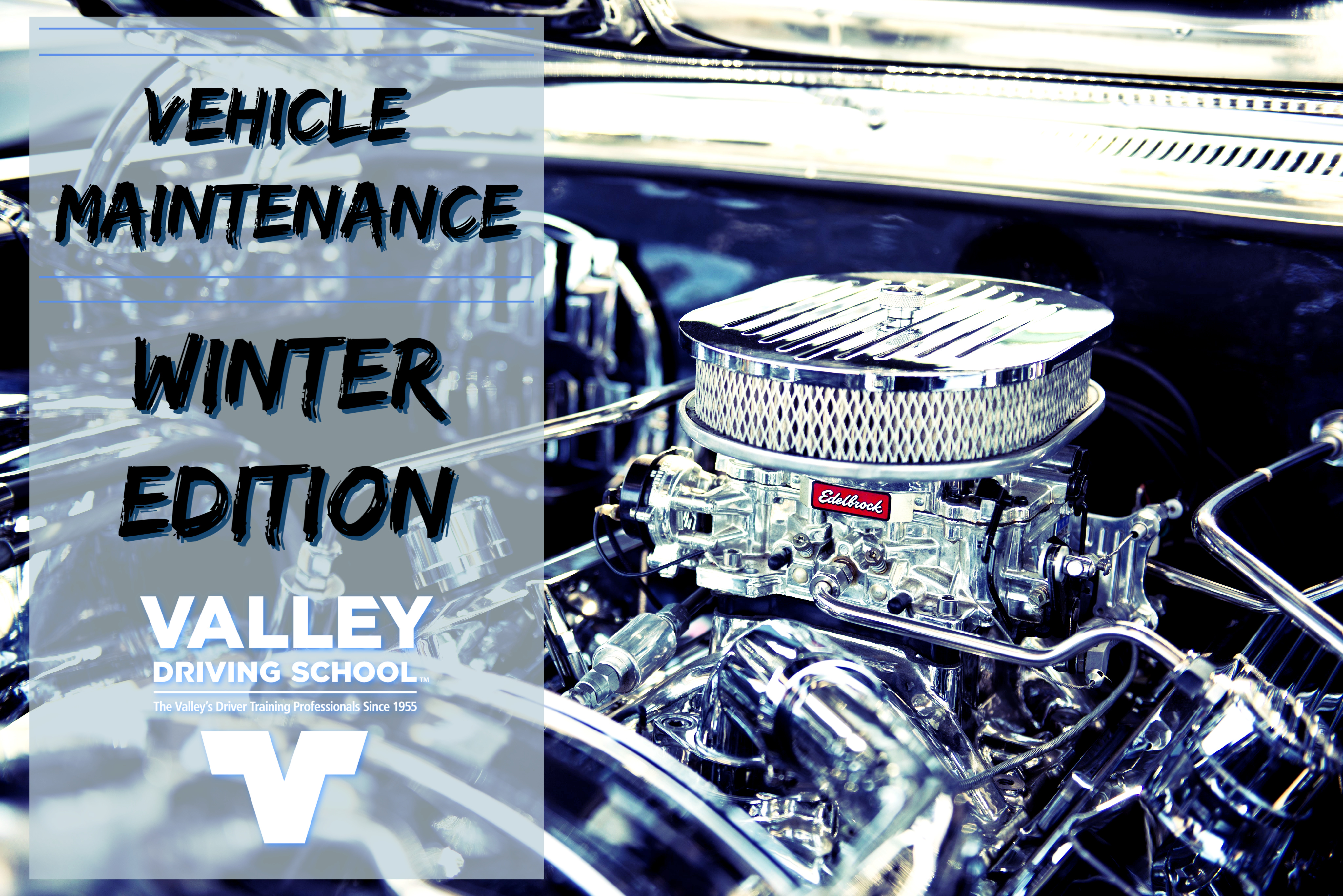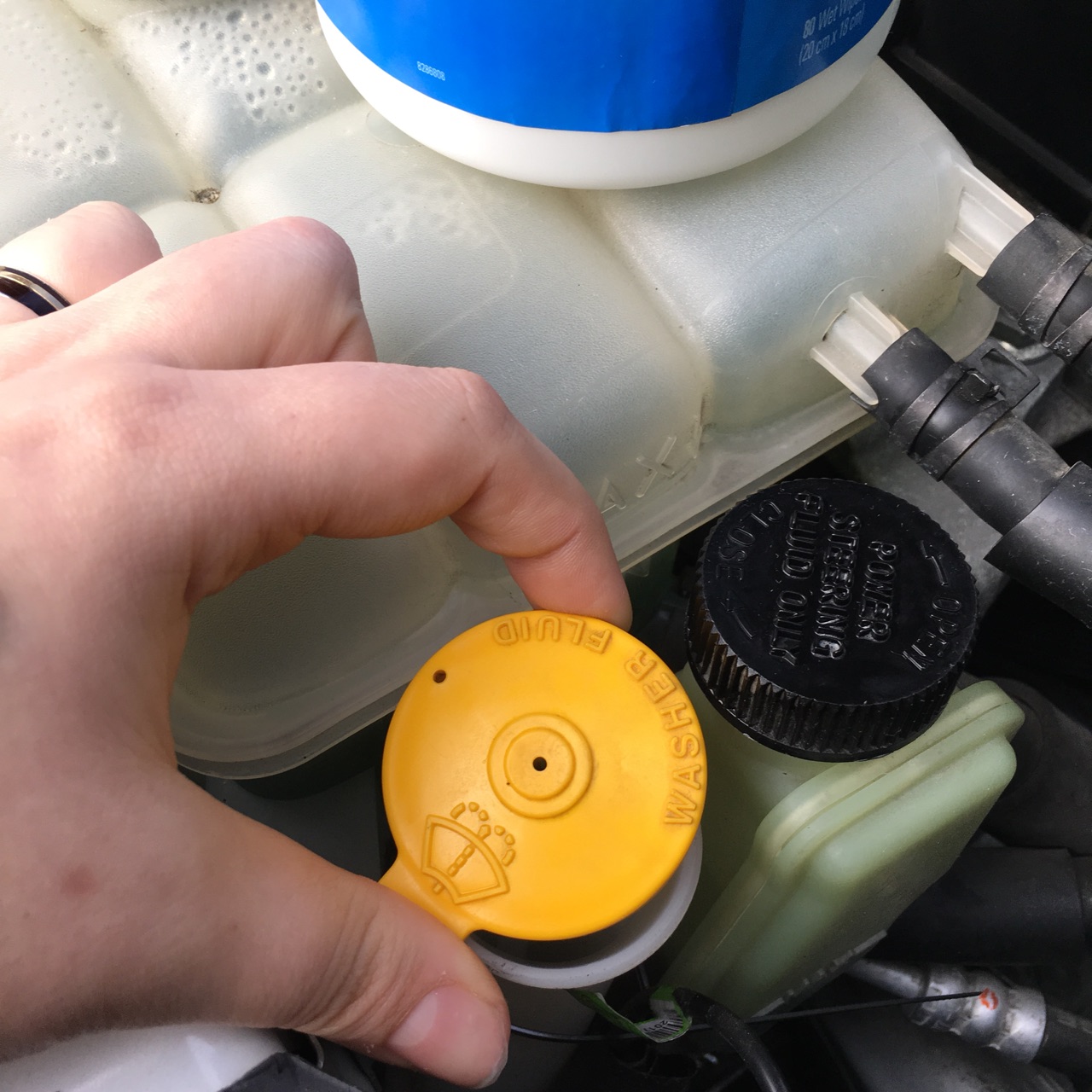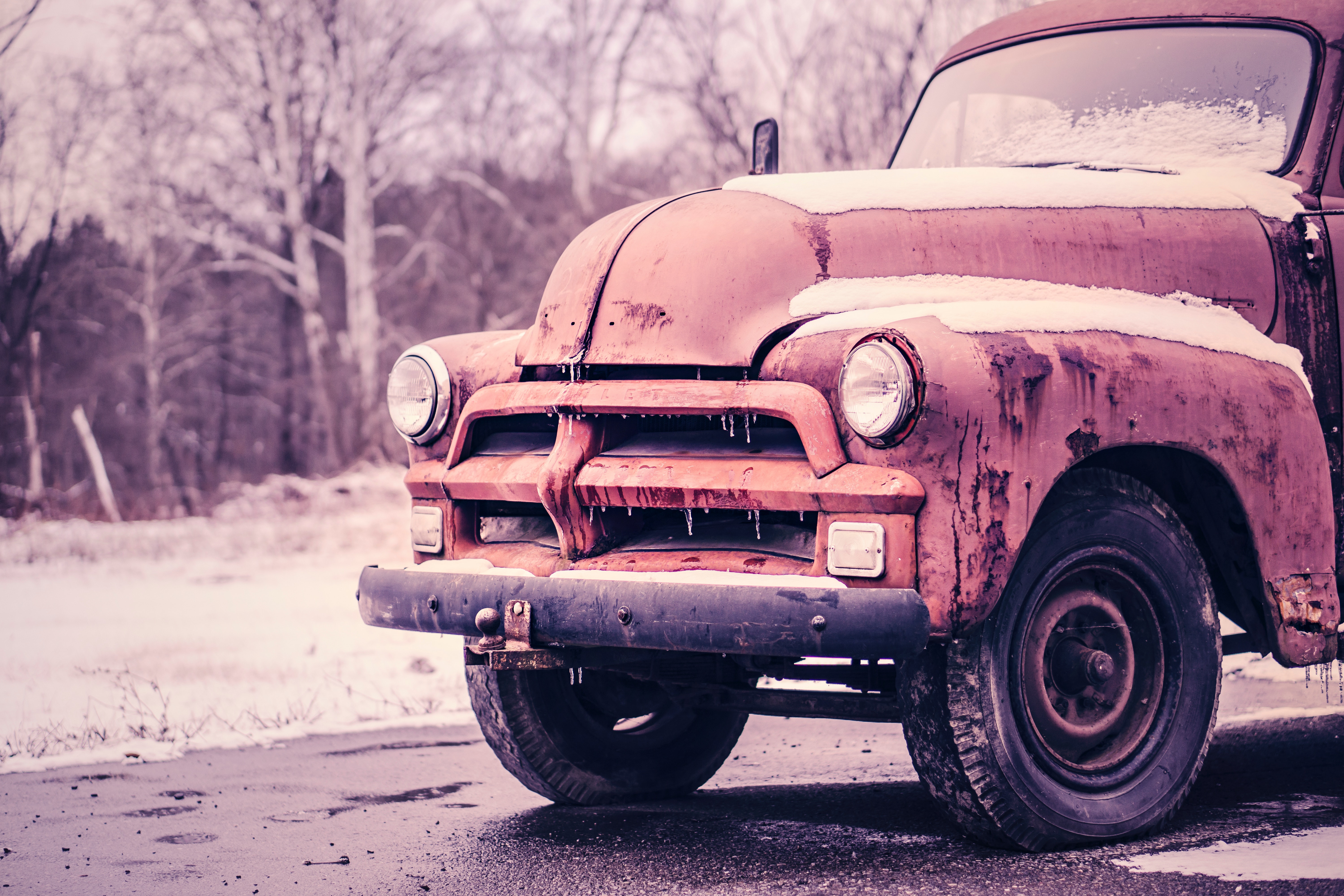With winter in full swing, many drivers have vehicle maintenance on their minds. Winter is a unique season in that it requires a specific set of maintenance activities to prepare for the incoming elements, so it’s a great time to get your car in tip-top shape for the cold and wet conditions.

Even if you don’t have snow on the ground yet, the season is definitely here. Now is the perfect time to get ahead of your winter maintenance to ensure you are prepared and ready for the ice and snow when it arrives.
As the old saying goes, ‘knowledge is power,’ so, in this post, we’ve built a winter edition of our basic vehicle maintenance guide.
Winter Tires
 A good set of winter tires can be the difference between being stuck in your driveway and being able to make it to your destination safely.
A good set of winter tires can be the difference between being stuck in your driveway and being able to make it to your destination safely.
Every fall you may notice a slew of people exchanging their regular tires for winter ones, and for good reason, as winter tires are better equipped to deal with adverse winter road conditions like ice and snow. Winter tires can be identified by the 3-peaked mountain and snowflake on the sidewall of the tire and perform best on rough ice, and soft or hard-packed snow. They reduce the likelihood of an accident happening by evenly distributing the weight of the vehicle and gripping the surface of the road with an aggressive tread design and softer rubber compounds.
Studded tires are also an option for winter months. These tires have studs throughout the tread of the tire, providing even more traction than winter-rated tires. Studded tires are only legal to drive from October 1st to April 30th, and using them outside of this time could result in a fine. A downside to studded tires is that they can be quite noisy (from the studs hitting the road) and you must have a full set of 4 studded tires, as you are not legally allowed to drive with only 2.
Winterizing Fluids
Cold climates and winter can mean a specialized take on your vehicle fluids. Changing the various fluids - transmission, brake, radiator, coolant, windshield washer fluid, etc - is a great way to keep the engine running smoothly an should be done regularly. However, when winter arrives you can help your engine out even more.

Start your winterization process by switching to winter-formula Windshield Washer Fluid. This change can happen as fall rolls around and you’re running low – no need to drain your current fluid, just top it up. You can mix both warm-weather and cold-weather fluid in its’ tank and the Winter-formula is usually good down to at least minus 40°C.
Next on the fluid list, check and change your oil. Oil lubricates your engines innumerable moving parts, reducing heat, friction, and general wear and tear. The effectiveness of the oil can be impacted by colder weather, but you can fix this by switching to a different viscosity that is better suited for the winter. You can find the right oil for the colder months by consulting your owners’ manual or speak with your mechanic.
Finally, take a look at the fluid in your radiator. Many vehicles these days have anti-freeze instead of water, which not only keeps the liquid from freezing but also keeps corrosion at bay. You can have pure water in your radiator, but once freezing temperatures come along this can mean a vehicle that won’t start due to frozen water. Anti-freeze can be bought as a concentrate or pre-mixed – concentrated anti-freeze should be mixed 50/50 with water before being added but the pre-mixed stuff can be put in directly.
Roadside Emergency Kits
A standard roadside emergency kit is a great idea to invest in prior to winter conditions coming around, as drivers are more likely to find themselves needing extra supplies or assistance. If you’re commuting to and from work, or headed into the mountains for a weekend away, you may want to make or purchase a ready-made kit.
Adapting your emergency roadside kit is all about knowing what to take into specific situations, and gauging what you’ve experienced in the past. Having the right gear and supplies with you is all about looking ahead and envisioning all possible scenarios before you leave the house.
Rust Proofing
Metal oxidizes and the sheet metal on our vehicle’s body is no exception. Our vehicles are more likely to sustain damage from rust when they are constantly exposed to copious amounts of moisture, especially when coupled with salt from road clearing and plowing efforts.

Rust-proofing is an important preventative maintenance measure that shouldn’t be overlooked. Many vehicle manufacturers offer factory warrantied rustproofing services and many third-party businesses, Krown, for example, provide rustproofing services. This can protect your vehicles from rusting over time.
Second to rustproofing, a solid wax and polish a couple of times per year is a great way to help keep the metal separated and protected from the deadly combination of oxygen and water on its surface. Waxing creates a protective barrier between the vehicle’s paint helping to prolong the life of the finish of your vehicle, protect against oxidation, and keep it looking great at the same time.
----
Winter conditions and driving in them is not only a different experience for you, but a different experience for your vehicle. Take some time before heading out and make sure you’re prepared for whatever you might encounter out there. Check that you have everything that you and that your vehicle need, including pre-emptive maintenance!
When we care for our vehicles, we keep them in proper working order and when they work properly we dramatically reduce the chance of a mishap.
